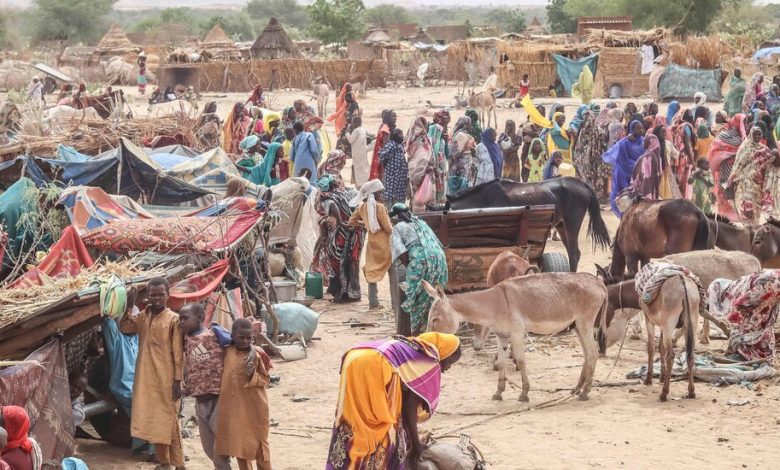More Than 100,000 Have Fled Sudan to Neighboring Countries

More than 100,000 people have fled Sudan for neighboring countries and more than 300,000 have been internally displaced, according to figures released by United Nations agencies on Tuesday, as the fighting between rival generals threatened to undermine regional stability and tear apart Africa’s third-largest nation.
The United Nations refugee agency also warned that more than 800,000 people could try to escape the conflict in Sudan by the end of this year to the seven nations bordering the northeastern African country — many of them already reeling from a multitude of their own economic, political and refugee crises.
The clashes between the Sudanese Army, led by Gen. Abdel Fattah al-Burhan, and the paramilitary Rapid Support Forces, led by Lt. Gen. Mohamed Hamdan, have only intensified despite calls for a cease-fire. More than 450 people have died and more than 4,000 have been injured, according to the World Health Organization.
On Tuesday morning, residents in parts of the capital, Khartoum, reported intense clashes and heavy shelling throughout the night. Many residents of the capital are without electricity and worried about dwindling food and water. Given the deteriorating situation, the United Nations said it was preparing for a mass exodus from Sudan.
“We hope it doesn’t come to that,” Filippo Grandi, the U.N. High Commissioner for Refugees, said in a statement, “but if violence doesn’t stop, we will see more people forced to flee Sudan seeking safety.”
The U.N. refugee agency said that the more than 100,000 people who have already fled the conflict, now in its third week, have gone to neighboring Chad, South Sudan, Egypt, the Central African Republic and Ethiopia. More than 334,000 people were also internally displaced in 14 of Sudan’s 18 states, the International Organization for Migration said on Tuesday.
The predictions from the U.N. that more than 800,000 could flee over the rest of this year were published after consultations with the seven governments surrounding Sudan — the Central African Republic, Chad, Egypt, Eritrea, Ethiopia, Libya and South Sudan.
So far, more than 30,000 people have arrived in Chad, which was already hosting 400,000 refugees from Sudan, many of whom fled the conflict in the Darfur region in western Sudan. More than 20,000 people have also arrived in South Sudan, said Raouf Mazou, the assistant high commissioner for operations at the U.N. refugee agency. Egypt had also taken in about 14,000 people since the fighting began on April 15, Mr. Mazou said.
The conflict has been most intense in major cities like Khartoum and Omdurman, and observers and aid agencies say that many more people will try to flee the country if the violence drags on. Many Sudanese worry that the clashes will only intensify in major cities as foreign governments finalize evacuation plans for their citizens and diplomatic staff.
Sudan was hosting 1.3 million refugees from several neighboring countries as well as Syria before the conflict broke out. Many were gravitating to major towns and cities seeking work and help from aid agencies. But a prolonged fight means aid agencies will be forced to halt or limit those operations, pushing those refugees to flee and face an uncertain future.
Several aid agencies have suspended operations in the country or have left their local staff members running slimmed-down outfits. On Monday, the World Food Program said it would resume its services in Sudan weeks after it halted operations following the killing of three of its staff members.
The U.N. predicted that a majority of the refugees fleeing the violence in Sudan would be Sudanese nationals, but more than 200,000 South Sudanese refugees are also expected to return home to even more difficult circumstances, the agency said.
Humanitarian organizations have already begun preparing contingency plans to receive refugees in countries including the Central African Republic, Chad, Ethiopia and South Sudan. But aid officials say all of these locations face significant challenges, including volatile security and difficult supply chains.
As the number of refugees grows, aid agencies will also need increased funding, personnel and relief supplies, said Allison Huggins, the deputy regional director for Africa at Mercy Corps, a nongovernmental organization.
“This conflict would not only have catastrophic consequences for Sudan but also for neighboring countries,” Ms. Huggins said. “Any prolonged period of insecurity would have far-reaching consequences for the region, impacting the economy and the growing refugee population.”




